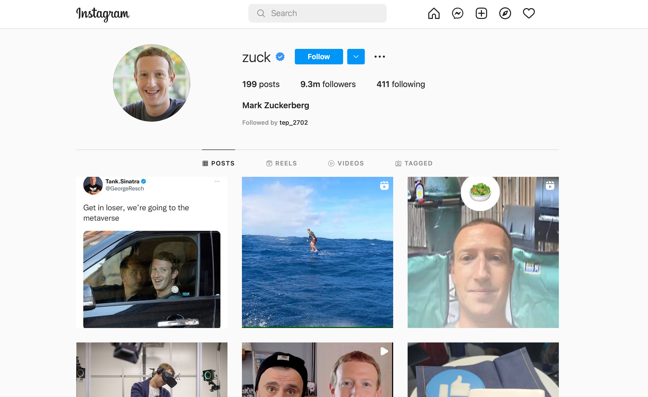Facebook is rightfully considered one of the most popular active social networks to date. According to statistics, approximately one-third of the world uses the Facebook platform (SRD, 2022). It would be correct to say that Facebook does not have a single, universal goal; instead, the digital platform offers users a range of opportunities for virtual leisure. The social network allows users to communicate with other users, view news feeds and leave comments, express their opinions through emoji reactions, watch videos and follow third-party links to primary sources as one of the historically first features, communication with other users is realized through a system of embedded chats, which are accessible from all electronic devices, whether computer, smartphone, or tablet. However, working from mobile devices requires installing a separate application, Messenger, which solves the functions directly only of communication. In other words, it gives many possibilities depending on the user’s interests, needs, and mood.
I use the Facebook platform almost every day because it makes tremendous digital sense. Facebook makes it easy to interact with the virtual field and allows us to connect with people and keep up with news from around the world, which is the main reason. However, Facebook is linked to privacy scandals; the platform uses personal user data and possibly overhears it for personal marketing purposes (BBC, 2018). This is a critical issue that the company must publicly address to increase user trust.
Twitter is another extremely popular social network widely associated with political statements. Twitter helps connect people from around the planet, read and comment on news, use an advanced tagging system, and follow external links. Twitter is actively used by 290.5 million users every month, which is growing (SRD, 2022). One of the most frequently used features of this platform is speaking publicly, which politicians and media personalities use. The embedded communication system is based on comments to specific tweets (posts) and retweets, through which each user can express his or her opinion and support the discussion.
I do not use this platform very often because it is less convenient than Facebook. However, I often hear about Twitter in the news and other social networks, as many politicians speak out there. Also, the logic of this social network does not seem very convenient to me because the tagging system can be confusing. Among Twitter’s fundamental problems are the small number of posted text tweets (only 280 characters) and many toxic users (Fernyhough, 2021). In addition, Twitter is often accused of political propaganda and bots to promote tags in the rankings.
Snapchat
Another type of social network is Snapchat, which is mainly used to apply filters and effects to the face. The platform has up to 300 million daily users (SRD, 2022). Snapchat is more of a synthesis of entertainment features and face-to-face chats with friends, but it does little to address the need to learn new things, read the news or find helpful information. Nonetheless, Snapchat is very much about bringing people together, as the format of instant photos and videos to share allows you to stay online almost around the clock and respond quickly to messages. Snapchat has a built-in chat system in which each user can exchange text or audio-visual messages whenever he or she wants. However, Snapchat is not available (or at least not convenient) to use in a desktop version, which contradicts the idea of the app’s mobility.
I use Snapchat every time I want to have fun with filters because many of them are fun and make me laugh. In contrast, other effects make photos and videos more appealing, increasing my interest in Snapchat. However, I rarely use this platform to communicate with friends. Some of the main problems with this network include the possibility of sexual, psychological abuse by inadequate users and cyberbullying (SS, 2019). In addition, this platform forces teens to use facial plastic filters, which can catalyze issues of not accepting one’s body.
Instagram is one of the most popular social networks at the moment. Specifically, approximately 1/8th of the world’s population is registered on Instagram (Iqbal, 2022). This social network allows you to post audiovisual content in a feed or short Stories format, which is one of the main functions of this platform. Since 2012, when Meta (Facebook) bought Instagram, the social network’s functionality has grown significantly (Shead, 2019). This includes using filters and effects, recommendation feeds, chats, and video calls. The logic of communication within the platform is based on the latter because users can correspond in personal chats or groups and call each other or communicate in live broadcasts. The platform is straightforward to use on the phone, but it can also be used (in a limited way).
Like 1/8 of the world, I actively use Instagram because I see it as a grand synthesis of features, entertaining and informative content, and communication with friends and acquaintances. Instagram also helps me grow my business, although I do not use it for that purpose yet. However, Instagram, as a Meta product, has data privacy issues. In addition, users are virtually immune to cyberbullying (PZ, n.d.). Finally, like Snapchat, Instagram can create a culture of not accepting one’s appearance, which creates psychological trauma in teenagers.
References
BBC. (2018). Facebook’s data-sharing deals exposed. BBC. Web.
Fernyhough, E. (2021). 3 major problems with Twitter. Medium. Web.
Iqbal, M. Instagram revenue and usage statistics (2022). Business of Apps. Web.
PZ. (n.d.). Instagram – what are the issues? Parent Zone. Web.
Shead, S. (2019). Facebook owns the four most downloaded apps of the decade. BBC News. Web.
SRD. (2022) Countries with the most Facebook users 2021. Statista. Web.
SRD. (2022). Twitter: Number of worldwide users 2019-2024. Statista. Web.
SRD. (2022). Daily active users of Snapchat 2014-2021. Statista. Web.
SS. (2019). Negative effects of Snapchat for teens. Smart Social. Web.



